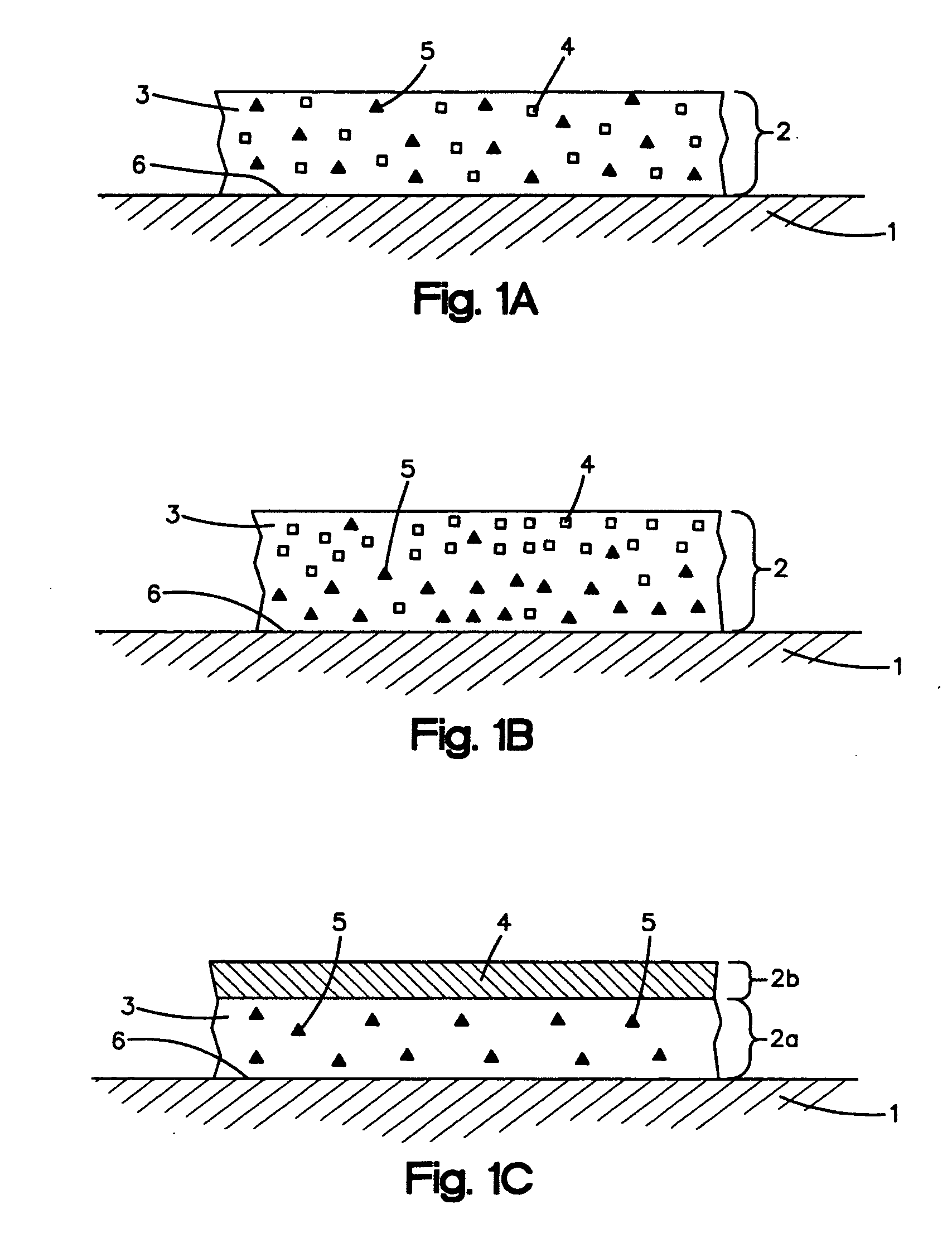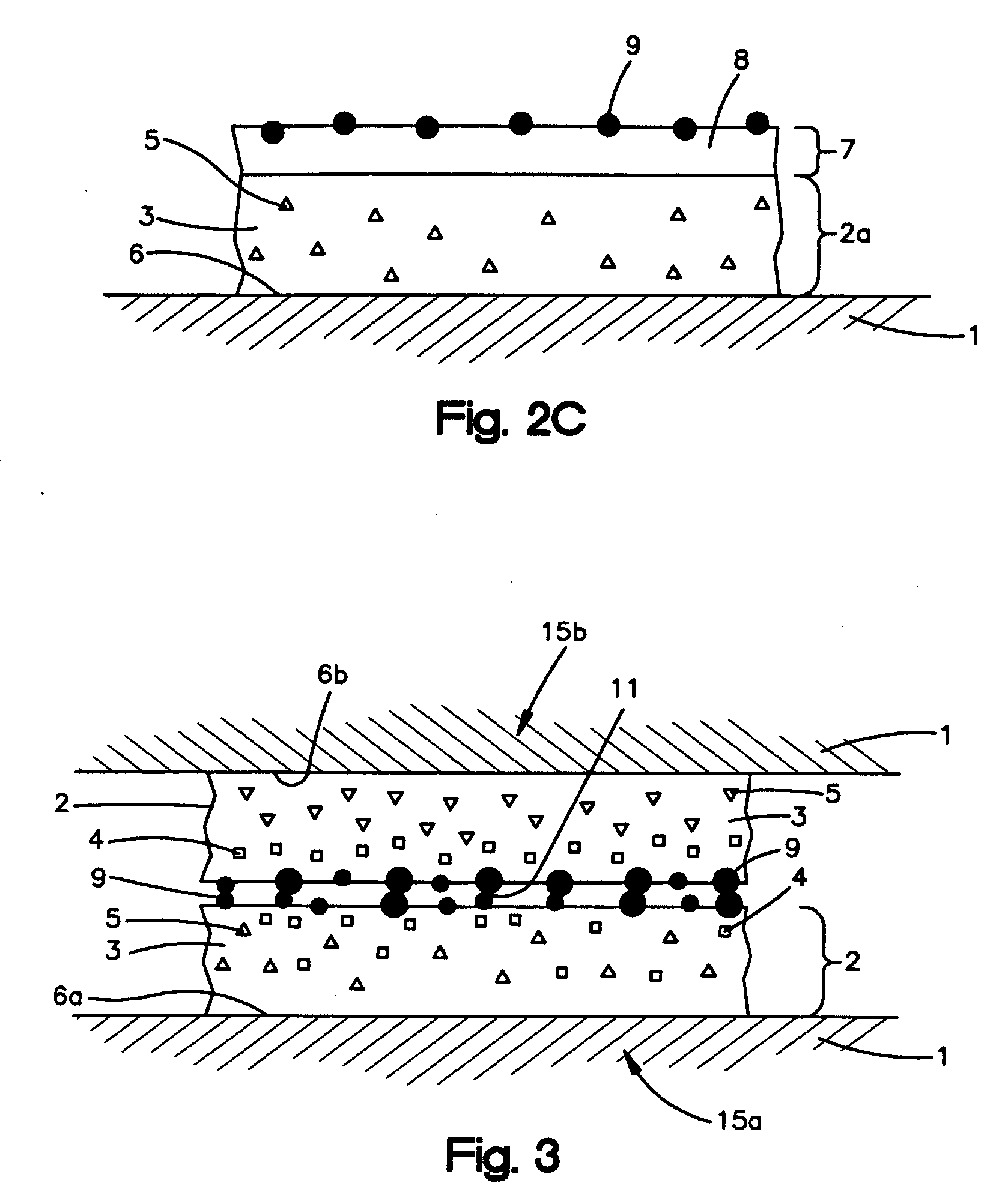Anti-adhesion agents for drug coatings
a technology of anti-adhesion agent and drug coating, which is applied in the field of coating to achieve the effect of reducing, preventing or reducing the adhesion or tack of the coating by chemical anti-adhesion agen
- Summary
- Abstract
- Description
- Claims
- Application Information
AI Technical Summary
Benefits of technology
Problems solved by technology
Method used
Image
Examples
example 1
Coatings with a Chemical Anti-Adhesion Agent
[0091] One of the following chemical anti-adhesion agents was added to a 25% solution of styrene-isobutylene copolymer dissolved in THF and toluene. The amount of anti-adhesion agent loading was 2 wt % (based on weight of polymer). Coatings were cast onto PET film using a knife coater to give a dry coating thickness of about 20 μm. The coatings were dried at 80° C. for 1 hour. Tack was measured using a stainless steel probe tip placed in contact with the coating surface with an applied weight of 50 g for 5 seconds. The force (in grams) required to pull the probe from the surface was measured. Tack force results are shown in Table 1:
TABLE 1Anti-Adhesion AgentAgent TypeTack Force(g)None42Silwet 7087 (Setre Chemical)Silicone23FC 430 (3M)Fluorochemical27
example 2
Coatings with a Chemical Anti-Adhesion Agent
[0092] One of the following anti-adhesion agents was used to form a coating (2% solids in water), which was applied to the styrene-isobutylene copolymer coating using a #7 wire-wound coating bar. The coating was dried at 80° C. for 15 minutes. Tack was measured as described in Example 1. Tack force results are shown in Table 2:
TABLE 2Anti-Adhesion AgentAgent TypeTack Force (g)None42Pluronic 17R4 (BASF)Nonionic Surfactant32Rhodapon BOS (Rhodia)Anionic Surfactant8Rhodapon LSB (Rhodia)Anionic Surfactant5
example 3
Coatings with Physical Anti-Adhesion Agents
[0093] Cross-linked styrene beads or fluorochemical particles were added to a 25% solution of styrene-isobutylene copolymer dissolved in THF (fluorochemical particles) and toluene (cross-linked beads). The fluorochemical particles were added at 2 wt % (based on weight of polymer) and the beads were added at 0.5 wt % (based on weight of polymer). The coatings were applied as described in Example 1. Tack force results are shown in Table 3:
TABLE 3ParticleTack Force (g)None42Teflon (Zonyl MP 1400; Dupont)344 μm (dia) Crosslinked Polystyrene bead27(Bang Beads)
PUM
| Property | Measurement | Unit |
|---|---|---|
| mole percent | aaaaa | aaaaa |
| thickness | aaaaa | aaaaa |
| weight | aaaaa | aaaaa |
Abstract
Description
Claims
Application Information
 Login to View More
Login to View More - R&D
- Intellectual Property
- Life Sciences
- Materials
- Tech Scout
- Unparalleled Data Quality
- Higher Quality Content
- 60% Fewer Hallucinations
Browse by: Latest US Patents, China's latest patents, Technical Efficacy Thesaurus, Application Domain, Technology Topic, Popular Technical Reports.
© 2025 PatSnap. All rights reserved.Legal|Privacy policy|Modern Slavery Act Transparency Statement|Sitemap|About US| Contact US: help@patsnap.com



